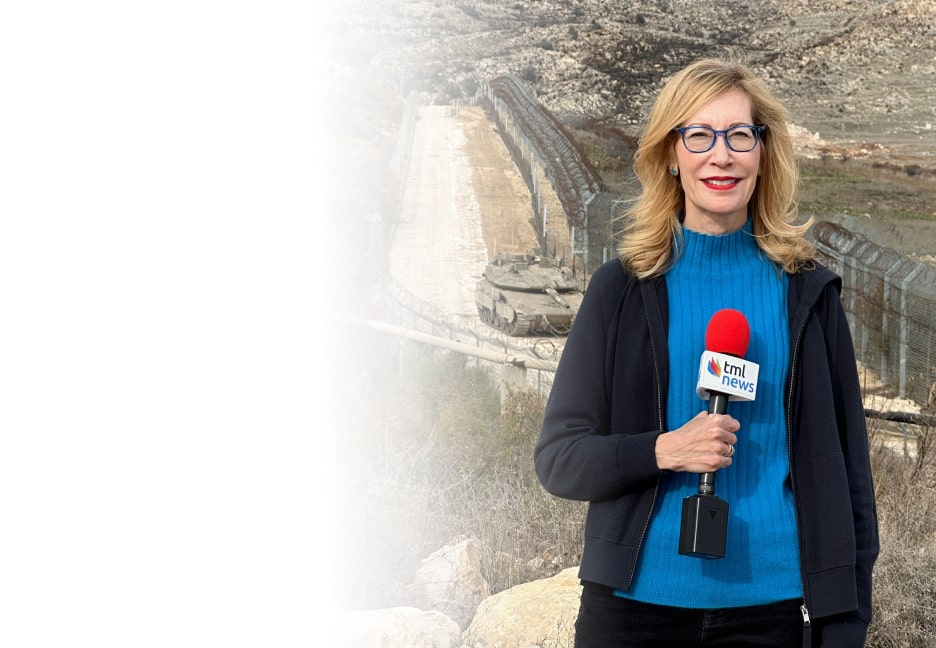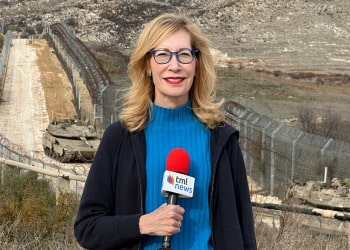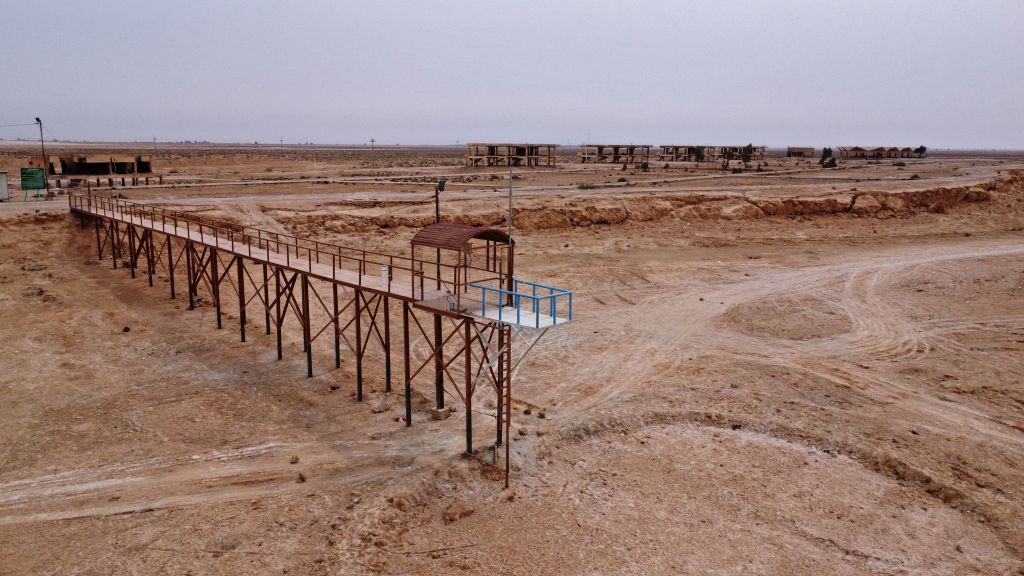Iraq Faces Acute Water Shortage
The drying up of Lake Sawa is just the beginning, say experts
Environmental experts have warned that the drying up ogf Lake Sawa in southern Iraq is a sign of more to come, with climate change and a lack of cooperation defining water distribution in the Middle East.
In April, the lake, which changes level seasonally and is the only one in Iraq to draw its water from underground aquifers, dried up completely for the first time in thousands of years.
For the inhabitants of nearby Samawa, the environmental concerns were trumped by the existential threat of losing access to the lake, which provides the only reachable water source in the region.
Droughts resulting from climate change are thought to be partially responsible for the drying up of the lake.
Some analysts say that human intervention in the water supply is more culpable.
Jassim Al-Asadi, managing director of the Chibaish office of Nature Iraq, told The Media Line that well-digging and industrial exploitation contributed to exhausting the supply of groundwater.
According to Al-Asadi, farmers have dug 5,000 wells within 6 kilometers of the Sawa Lake perimeter, exhausting the groundwater in the Dammam aquifer, upon which the lake depends.
The causes of drought are manifold. Some of them may be related to climate change, but the largest part is related to the unfair use of water in the region.
Moreover, the groundwater in the Dammam aquifer is exploited for salt production and for industrial purposes such as cement plants.
Salman Khairalla, executive director of the Humat Dijlah Association, an Iraqi nongovernmental organization that seeks to protect the natural heritage of the Tigris River, told The Media Line that the onus of the lack of water is on unfair water distribution in the region.
“The causes of drought are manifold. Some of them may be related to climate change, but the largest part is related to the unfair use of water in the region,” he said.
Al-Asadi told The Media Line that it is theoretically possible to reverse the damage so far inflicted upon the lake if strict measures are implemented in the immediate future.
“Certainly, the damage can be repaired by preventing trespassing for digging wells, enacting legislation to rationalize the use of groundwater, and digging experimental wells within the vicinity of the lake,” he said.
This holiday season, give to:
Truth and understanding
The Media Line's intrepid correspondents are in Israel, Gaza, Lebanon, Syria and Pakistan providing first-person reporting.
They all said they cover it.
We see it.
We report with just one agenda: the truth.


However, Nabil Musa, leader of the advocacy and awareness NGO, Waterkeepers Iraq-Kurdistan, deemed this an unlikely prospect given the more pressing concerns faced by Iraqis.
“We don’t have any plans or preparations for facing this kind of problem, because we have other problems to deal with, like wars and economic crises, and ISIS. Basically, we don’t have time to turn the country green. That’s why we are facing this situation,” he said.
Indeed, figures released by Iraq’s Water Resources Ministry indicate that water levels fell by 60% more in 2022 than in 2021.
Musa points to the increased number of droughts and sandstorms witnessed in Iraq over recent months as evidence of the severe effects of climate change.
“Right now, we are having a dust storm. This is maybe the fifth time it has happened this month,” explained Musa.
He went on to state that while Iraq has experienced dust storms before, the scale and density of the clouds are unprecedented.
“Today, I didn’t let my dogs out, I didn’t go out myself, and my partner didn’t go out because of the dust storm,” he continued.
This experience is corroborated by research that links waning water levels with more frequent and severe sandstorms, as figures from The World Bank suggest that by 2015 Iraq’s water resources may have fallen by 20%.
Moreover, Iraq’s Environment Ministry has warned that, in 20 years, Iraq could be ravaged by sandstorms for 272 days out of every year, increasing to 300 days by 2050.
The Media Line spoke to Gidon Bromberg, the Israeli director of EcoPeace Middle East, in April on World Environment Day, when he warned that water insecurity is the most pressing concern across the Middle East, requiring urgent regional cooperation.
Yet, in Musa’s eyes, Middle East cooperation over water has taken a backseat, with survival and self-interest prevailing.
With 80% of Iraq’s water coming from bordering countries, Iraq is to some extent at the mercy of its upstream neighbors for its water.
“Turkey and Iran, which are upstream, treat the water like their own private water, and don’t care about peoples’ lives downstream,” he said.
Within Iraq itself, competition over water has driven some groups to violent conflict.
“Right now, there’s a semi-civil war between some tribes because of water – stealing and redirecting water away from one another,” he added.
We’re seeing more heat waves, we’re seeing real change in the way rain patterns happen, all the rain on the coast which is lost at sea, less recharge of groundwater and less water in the whole Jordan river system
At a regional level, a report by the Carnegie Endowment in February 2022 showed that water scarcity is now threatening to trigger violent conflict in the Middle East and North Africa, as MENA is projected to be the first region in the world to “effectively run out of water.”
Rainfall in Jordan is expected to drop by 30% before the end of the century, and some models predict a reduction in MENA’s internal renewable water of around 4% by 2050.
According to the Carnegie Endowment, this will affect between 80 million and 90 million of the region’s inhabitants, who are currently on track to experience water insecurity by 2025.
Bromberg says that water shortages are now plaguing the region, threatening the extent of the watershed itself.
“We’re seeing more heat waves, we’re seeing real change in the way rain patterns happen, all the rain on the coast which is lost at sea, less recharge of groundwater and less water in the whole Jordan river system,” he said, listing only a few of the most worrying indicators of large-scale change.
As for Lake Sawa, once a hub for tourists due to its beauty and a source of drinking water, water for washing and cleaning, and fishing, the lake is now a cracked and hollowed-out basin, fenced in by piles of rock salt, a testament to the water scarcity which led farmers and businessmen to divert the water upstream for private purposes.
Aron Rosenthal is a student at the University of Edinburgh and an intern in The Media Line’s Press and Policy Student Program.

